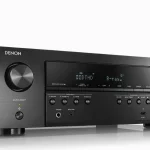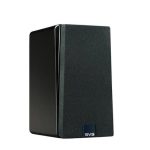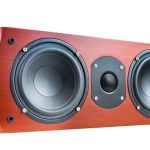There’re several surround sound formats that come with modern AV receivers. The numerous formats can be quite confusing. Some of the most common surround sound formats on AV receivers are Dolby Surround and DTS Neural X. How are these surround sound formats different? What makes each format special? In this article, we’ll discuss Dolby Surround Vs Neural X in detail.
The Basics of Surround Sound
Generally, surround sound improves your entertainment experience, be it at home or in the cinema. It works by creating an optimal environment for watching movies, listening to music, and gaming among other forms of AV entertainment. While conventional stereo offers dimensional sound from the front, surround sound expands sound around your listening position.
Surround sound involves at least a pair of front speakers (stereo right and left), another set of speakers placed at the sides, another speaker placed behind the listening position, and a center channel speaker. The center channel speaker is strategically positioned between the front right and left speakers to reproduce dialogue. Thus, a surround sound setup includes five speakers.
Dolby Surround
Dolby Surround was launched by Dolby in 1982. It’s a version of Dolby Stereo that’s specially designed for home AV receivers. Its design reproduces the Dolby Stereo effect as you’d experience in a theater. However, Dolby Surround differs from Dolby Stereo in that the audio channels in Dolby Surround format as specially encoded as magnetic soundtracks on videotapes or broadcasted as a TV signal instead of optical tracks.
While the original concept of a Dolby system features three speakers, which include the right front speaker, left front speaker, and rear speaker, Dolby surround has a fourth channel. The fourth channel is a front-center speaker.
Applications of Dolby Surround
Dolby started revamping the Dolby Surround format in 2014. Initially, Dolby Surround was mainly used for DVDs and Laserdiscs. In this case, Dolby Surround format involved processing a stereo signal to a rear channel and processing a mono signal to two surround speakers. The format was later improved to include a center channel in what became Dolby Pro Logic. Today, the original Dolby Surround format isn’t included in Dolby Atmos AV receivers.
Dolby Surround isn’t included in Dolby Atmos. The reason behind this is that Dolby doesn’t want up-firing and ceiling speakers to be only used for playing Blue-ray discs with Dolby Atmos soundtracks. Dolby Surround is currently used as a post-processing technique of sending 7.1, 5.1, or stereo signals to ceiling speakers. Also, Dolby Surround is used to up-mix a signal for 4, 5, or 7 regular speakers. The current Dolby Surround format allows for an improved dynamic range and more detailed and natural sound imaging.
Is Dolby Surround a great surround sound technology?
Dolby Surround is a great up-mixing technology. It takes a standard surround sound mix to create the extra channels supported by a specific sound system. For instance, if you’ve set up at least two height speakers with your AV receiver, Dolby Surround technology can create the ideal channels for the height speakers from a 5.1 channel or 7.1 channel soundtrack. Also, Dolby Surround can create the ideal channels for your speakers from a standard stereo track.
Dolby Surround also works superbly with surround sound systems featuring extra surround, up-firing, height, or ceiling speakers. It can also up-mix a stereo track into a 5.1 channel setup. It’s able to recreate height information and specific sound effects.
The technology behind Dolby Surround involves encoding 4 channels (front right, front left, rear surround, and center) into a 2-channel signal. The decoding chip in the receiver decodes the 4 channels and directs them to the required destination. Essentially, the center channel comes from the right and left speaker channels.
With surround sound, you get a well-balanced listening experience. For instance, the main sounds are heard from the right and left channels, effects or ambiance from the rear channel, and dialog or vocals from the center channel.
When listening to music encoded using the Dolby Surround format, you’ll get enhanced acoustical cues and a better natural feel. When watching a movie, the sounds move from left to right and front to rear in a more sensational manner for enhanced realism.
Limitations of Dolby Surround
Not all AV receivers may support Dolby Surround from some types of soundtracks. It may be limited to some soundtracks. Another limitation of Dolby Surround is that the rear is passive. Thus, it doesn’t have precise directionality. Besides, there’s less separation between the channels than in a standard stereo recording.
Neural X
DTS Neural X is a surround sound package that ensures data encoded with Neural X, older DTS bitstreams, and non-encoded data receives the sound effects of DTS X. Essentially, DTS X allows a filmmaker to control how sound moves in a three-dimensional (3D) space. As a result, it makes it possible for a listener to get a 3D listening experience. It means that a listener will feel they’re right in the middle of a film.
Applications of Neural X
Home theater or AV receivers that feature DTS X technology also incorporate DTS Neural X. Neural X is a great format that allows users to enjoy listening to non-DTS X DVD or Blu-ray content in a 3D experience.
The idea behind Neural X is optimizing playback depending on your speaker setup and creating a 3D surround sound experience. With Neural X, you can have a sound setup of 11.x channels at most.
Neural X approximates the width and the height sound field data of DTS X. It’s able to up-mix stereo, 5.1, and 7.1 channel audio sources.
With Neural X, you can get 7.1 surround sound from audio sources like gaming, HD radio, satellite radio such as SiriusXM, and TV broadcasts. DTS neural format allows a broadcaster to offer surround sound over stereo, making it a great format for TV stations that broadcast live sports, FM radio, and HD radio over a legacy network. Neural X is also included in some high-end car sound systems.
Is Neural X a great surround sound technology?
DTS Neural X is great in that it allows for an immersive sound experience for older content such as stereo, 5.1, ad 7.1 channels. With this format, you can up-mix your older content to take advantage of all speakers in your surround sound setup.
Limitations of Neural X
The main limitation of Neural X is that it’s not enabled for a DTS source whose sampling frequency is between 96 to 192 kHz. In that case, you won’t get sound from Dolby Atmos speakers or ceiling speakers.
Conclusion
When comparing DTS Neural X vs Dolby Surround, it’s worth noting that both are newer up-mixing formats in AV receiver systems. Both offer surround sound, making them an upgrade of 5.1 and stereo mixes. They also offer height channel atmospherics for 5.1, 7.1, and stereo mixes.
After comparing Dolby Surround vs Neural X, we can conclude that Dolby Surround delivers cleaner reverb while Neural X stumbles on individual vocals. Also, Neural X offers louder and more accurate output than Dolby Surround in height channel panning. As such, both surround sound formats have their unique benefits over each other and some limitations.
Michael Evanchuk is a San Francisco-based sound engineer with 20 years’ experience installing, troubleshooting, and repairing commercial, automotive, and household sound equipment. Evanchuk owns an auto stereo center, where he offers highly competitive car audio installation and repair services. He has written dozens of articles on different sound engineering topics, all of which have been published in leading journals, blogs, and websites.





